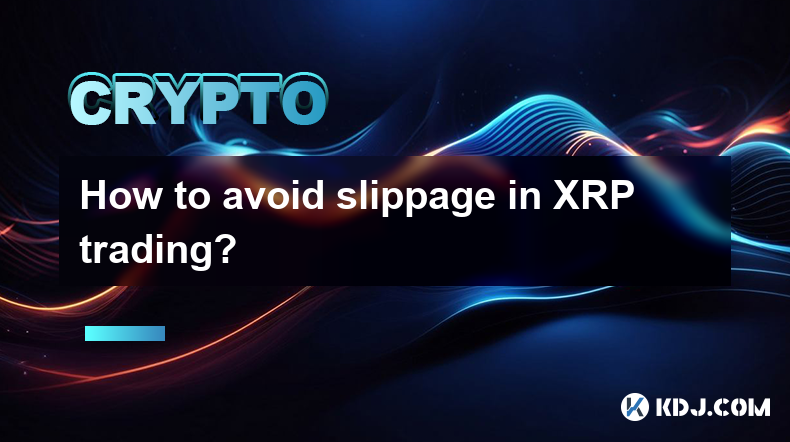-
 Bitcoin
Bitcoin $120400
1.77% -
 Ethereum
Ethereum $3615
7.90% -
 XRP
XRP $3.580
17.84% -
 Tether USDt
Tether USDt $1.001
0.06% -
 BNB
BNB $729.4
1.25% -
 Solana
Solana $179.9
5.04% -
 USDC
USDC $0.0000
0.01% -
 Dogecoin
Dogecoin $0.2311
8.22% -
 TRON
TRON $0.3226
4.04% -
 Cardano
Cardano $0.8490
12.85% -
 Hyperliquid
Hyperliquid $46.45
0.72% -
 Stellar
Stellar $0.4913
8.54% -
 Sui
Sui $4.027
2.00% -
 Chainlink
Chainlink $18.51
11.67% -
 Hedera
Hedera $0.2818
21.51% -
 Avalanche
Avalanche $24.03
7.40% -
 Bitcoin Cash
Bitcoin Cash $508.5
2.90% -
 Shiba Inu
Shiba Inu $0.00001496
3.24% -
 UNUS SED LEO
UNUS SED LEO $8.961
1.83% -
 Toncoin
Toncoin $3.264
3.13% -
 Litecoin
Litecoin $104.6
8.15% -
 Polkadot
Polkadot $4.389
6.11% -
 Uniswap
Uniswap $9.924
10.63% -
 Monero
Monero $337.9
0.49% -
 Pepe
Pepe $0.00001376
2.79% -
 Bitget Token
Bitget Token $4.830
2.46% -
 Ethena USDe
Ethena USDe $1.001
0.05% -
 Dai
Dai $1.000
0.02% -
 Aave
Aave $325.2
1.66% -
 Bittensor
Bittensor $423.7
-0.85%
How to avoid slippage in XRP trading?
To minimize slippage when trading XRP, use limit orders, trade during peak hours, and choose platforms with high liquidity like Binance or Kraken.
Apr 20, 2025 at 12:42 pm

Trading XRP, like any other cryptocurrency, involves various challenges, one of which is slippage. Slippage occurs when there is a difference between the expected price of a trade and the price at which the trade is executed. This can lead to unexpected losses, especially in volatile markets. Understanding how to minimize slippage is crucial for any trader looking to optimize their trading strategy on XRP. In this article, we will explore various strategies and tools that can help you avoid or reduce slippage when trading XRP.
Understanding Slippage in XRP Trading
Before diving into the methods to avoid slippage, it's important to understand what causes it. Slippage in XRP trading can be attributed to several factors, including market volatility, low liquidity, and the size of the order. When the market is highly volatile, the price of XRP can change rapidly, leading to a discrepancy between the price you see and the price at which your order is filled. Similarly, if the market for XRP has low liquidity, large orders can move the market price, causing slippage.
Choosing the Right Trading Platform
One of the key ways to minimize slippage is by selecting a trading platform that offers high liquidity and advanced order types. High liquidity means there are more buyers and sellers in the market, which can help ensure that your orders are executed closer to your desired price. Platforms like Binance, Kraken, and Coinbase Pro are known for their high liquidity in XRP markets.
- Check the liquidity of the platform: Before you start trading, research the trading volume of XRP on different platforms. Higher trading volumes typically indicate better liquidity.
- Use platforms with advanced order types: Some platforms offer features like stop-loss orders, limit orders, and other advanced order types that can help you manage slippage more effectively.
Utilizing Limit Orders
Limit orders are one of the most effective tools for avoiding slippage. Unlike market orders, which are executed at the current market price, limit orders allow you to set a specific price at which you want your order to be executed. This can help ensure that you do not pay more than you are willing to for XRP.
- Set a limit order at your desired price: If you want to buy XRP at $0.50, you can set a limit order at that price. Your order will only be filled if the market price reaches or falls below $0.50.
- Monitor your orders: Keep an eye on your limit orders to see if they are being filled. If the market moves away from your set price, you may need to adjust your order.
Trading During Optimal Times
The time of day you choose to trade can also impact slippage. Trading during peak hours can help reduce slippage because there is typically more liquidity in the market. For XRP, peak trading hours often coincide with the opening hours of major financial markets, such as those in New York and London.
- Identify peak trading hours: Research when the highest trading volumes occur for XRP. This information can usually be found on trading platforms or through market analysis websites.
- Avoid trading during low liquidity periods: Try to avoid trading during times when the market is less active, such as late at night or during holidays, as these periods can have lower liquidity and higher slippage.
Using Slippage Tolerance Settings
Some trading platforms offer slippage tolerance settings, which allow you to specify the maximum amount of slippage you are willing to accept. This can be particularly useful for traders who use market orders and want to limit their exposure to slippage.
- Set a slippage tolerance: If you are using a platform that offers this feature, you can set a slippage tolerance of, for example, 1%. This means that your order will only be executed if the slippage does not exceed 1% of your desired price.
- Understand the implications: Be aware that setting a very low slippage tolerance may result in your order not being filled if the market moves too quickly.
Monitoring Market Depth
Market depth refers to the number of buy and sell orders at different price levels in the order book. By monitoring market depth, you can get a better understanding of the liquidity available at various price points and make more informed trading decisions.
- Use a depth chart: Many trading platforms offer a depth chart that visually represents the buy and sell orders in the market. This can help you see where the most liquidity is concentrated.
- Avoid placing large orders in thin markets: If you see that the market depth is low at your desired price level, it may be better to break your order into smaller chunks to minimize slippage.
FAQs
Q: Can slippage be completely eliminated in XRP trading?
A: While it is not possible to completely eliminate slippage, the strategies discussed in this article can help minimize it. Slippage is a natural part of trading in volatile and sometimes illiquid markets, but with the right tools and techniques, you can manage it effectively.
Q: How does the size of my order affect slippage?
A: The size of your order can significantly impact slippage. Larger orders are more likely to cause price movements, especially in markets with low liquidity. To minimize slippage, consider breaking large orders into smaller ones and executing them over time.
Q: Are there any tools or indicators that can help predict slippage?
A: While there are no specific tools designed to predict slippage, you can use market depth charts and liquidity indicators to get a sense of the market's current state. Additionally, historical volatility data can help you understand how much the price of XRP might move during your trading session.
Q: How can I quickly adjust my trading strategy if I encounter high slippage?
A: If you encounter high slippage, you can quickly adjust your strategy by switching to limit orders, trading during peak hours, or reducing the size of your orders. Additionally, consider using slippage tolerance settings if your platform offers them to better control your exposure to slippage.
Disclaimer:info@kdj.com
The information provided is not trading advice. kdj.com does not assume any responsibility for any investments made based on the information provided in this article. Cryptocurrencies are highly volatile and it is highly recommended that you invest with caution after thorough research!
If you believe that the content used on this website infringes your copyright, please contact us immediately (info@kdj.com) and we will delete it promptly.
- XRP, Dogecoin, and Crypto Bills: What's Shaking in the Crypto World?
- 2025-07-18 20:50:13
- Trump, Family Business, and Power: A New Era of Conflicts?
- 2025-07-18 20:30:12
- Trump, Business, & Bitcoin: A Crypto Capitalist's Vision
- 2025-07-18 20:40:12
- MEXC's Q2 Domination: Riding the Crypto Wave to Market Leadership
- 2025-07-18 18:30:12
- Caldera (ERA) Takes Flight: Binance Listing Ignites Crypto Surge
- 2025-07-18 19:10:13
- Hex Trust and Algorand: Institutional Staking Rewards Take Center Stage
- 2025-07-18 19:50:13
Related knowledge

How to customize USDT TRC20 mining fees? Flexible adjustment tutorial
Jun 13,2025 at 01:42am
Understanding USDT TRC20 Mining FeesMining fees on the TRON (TRC20) network are essential for processing transactions. Unlike Bitcoin or Ethereum, whe...

USDT TRC20 transaction is stuck? Solution summary
Jun 14,2025 at 11:15pm
Understanding USDT TRC20 TransactionsWhen users mention that a USDT TRC20 transaction is stuck, they typically refer to a situation where the transfer...

How to cancel USDT TRC20 unconfirmed transactions? Operation guide
Jun 13,2025 at 11:01pm
Understanding USDT TRC20 Unconfirmed TransactionsWhen dealing with USDT TRC20 transactions, it’s crucial to understand what an unconfirmed transaction...

How to check USDT TRC20 balance? Introduction to multiple query methods
Jun 21,2025 at 02:42am
Understanding USDT TRC20 and Its ImportanceUSDT (Tether) is one of the most widely used stablecoins in the cryptocurrency market. It exists on multipl...

What to do if USDT TRC20 transfers are congested? Speed up trading skills
Jun 13,2025 at 09:56am
Understanding USDT TRC20 Transfer CongestionWhen transferring USDT TRC20, users may occasionally experience delays or congestion. This typically occur...

The relationship between USDT TRC20 and TRON chain: technical background analysis
Jun 12,2025 at 01:28pm
What is USDT TRC20?USDT TRC20 refers to the Tether (USDT) token issued on the TRON blockchain using the TRC-20 standard. Unlike the more commonly know...

How to customize USDT TRC20 mining fees? Flexible adjustment tutorial
Jun 13,2025 at 01:42am
Understanding USDT TRC20 Mining FeesMining fees on the TRON (TRC20) network are essential for processing transactions. Unlike Bitcoin or Ethereum, whe...

USDT TRC20 transaction is stuck? Solution summary
Jun 14,2025 at 11:15pm
Understanding USDT TRC20 TransactionsWhen users mention that a USDT TRC20 transaction is stuck, they typically refer to a situation where the transfer...

How to cancel USDT TRC20 unconfirmed transactions? Operation guide
Jun 13,2025 at 11:01pm
Understanding USDT TRC20 Unconfirmed TransactionsWhen dealing with USDT TRC20 transactions, it’s crucial to understand what an unconfirmed transaction...

How to check USDT TRC20 balance? Introduction to multiple query methods
Jun 21,2025 at 02:42am
Understanding USDT TRC20 and Its ImportanceUSDT (Tether) is one of the most widely used stablecoins in the cryptocurrency market. It exists on multipl...

What to do if USDT TRC20 transfers are congested? Speed up trading skills
Jun 13,2025 at 09:56am
Understanding USDT TRC20 Transfer CongestionWhen transferring USDT TRC20, users may occasionally experience delays or congestion. This typically occur...

The relationship between USDT TRC20 and TRON chain: technical background analysis
Jun 12,2025 at 01:28pm
What is USDT TRC20?USDT TRC20 refers to the Tether (USDT) token issued on the TRON blockchain using the TRC-20 standard. Unlike the more commonly know...
See all articles

























































































